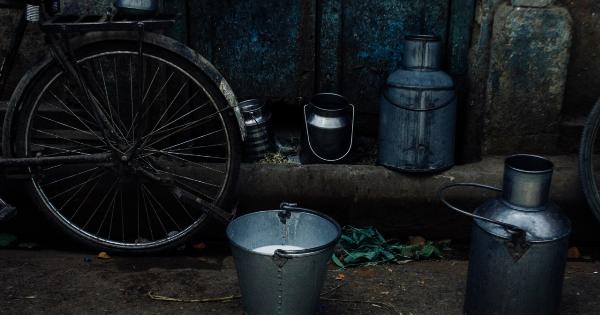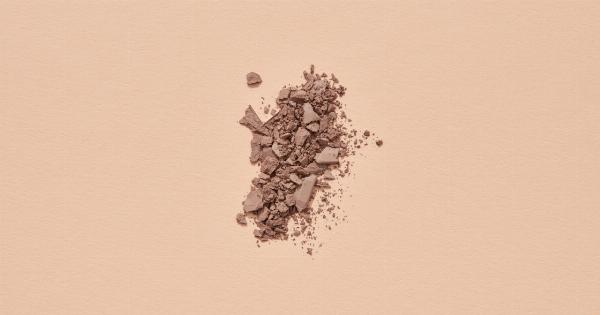A broken nose is a common injury that can occur due to various reasons such as accidents, sports injuries, or physical altercations.
Besides the immediate pain and discomfort, a broken nose can significantly impact your daily life, including your ability to breathe properly and participate in physical activities. However, with proper care and treatment, you can recover from a broken nose and get back in the game.
In this article, we will discuss the process of recovering from a broken nose and provide valuable tips to help you heal faster and regain your normal life.
Symptoms of a Broken Nose
Before diving into the recovery process, it’s essential to identify the symptoms of a broken nose. Some common signs and symptoms include:.
- Nasal pain and tenderness
- Sudden swelling and bruising around the nose
- Difficulty breathing through the nose
- Nosebleeds
- Visible deformity or crookedness of the nose
- Cracking or grating sensation when touching the nose
Seeking Medical Help
If you suspect that you have a broken nose, it’s crucial to seek medical help as soon as possible.
A healthcare professional, usually an ENT specialist or a facial trauma expert, can assess the extent of the injury and provide appropriate guidance for recovery. They may order an X-ray or CT scan to have a detailed view of the fracture and determine if there are any associated injuries to the facial bones.
Immediate Care
While waiting for medical assistance, there are a few immediate care steps you can take to alleviate the discomfort and reduce the chances of further damage:.
- Apply ice packs or cold compresses to the nose to reduce swelling
- Keep your head elevated to minimize blood flow to the nose
- Avoid blowing your nose or putting any pressure on it
Treatment Options
The treatment for a broken nose depends on the severity of the fracture. In minor cases, your doctor may recommend non-surgical options such as:.
- Using nasal splints or internal nasal packs to stabilize the nose
- Prescribing pain relievers and decongestants to manage pain and congestion
- Applying antibiotic ointments to prevent infection
In more severe cases where the fracture has caused significant deformity or breathing difficulties, surgery may be necessary. Surgical intervention can involve:.
- Repositioning the fractured bones
- Removing any obstructing tissues or correcting nasal septum deviation
- Fixing the fractured bones with internal supports like plates or wires
Recovery Process
Once the initial treatment is complete, it’s time to focus on the recovery process. Here are some essential tips to help you recover faster:.
1. Follow the Doctor’s Instructions
Your doctor will provide specific guidelines and instructions based on your condition. It’s crucial to follow them diligently to ensure a smooth recovery.
This may include taking prescribed medications, attending follow-up appointments, or avoiding certain activities that may strain your nose.
2. Take Ample Rest
Rest is essential for your body to heal. Avoid strenuous activities, especially those that may risk injuring your nose further. Allow yourself enough time to recuperate, and ensure you get sufficient sleep to aid the healing process.
3. Apply Warm Compresses
After the initial swelling has subsided, you can switch from cold compresses to warm compresses. Applying a warm compress to your nose several times a day can help reduce residual swelling and improve blood circulation, promoting faster healing.
4. Maintain Nasal Hygiene
Keeping your nasal passages clean is crucial during the recovery process. Follow your doctor’s instructions for cleaning your nose, which may involve saline rinses or nasal sprays. It helps reduce the risk of infection and ensures proper healing.
5. Avoid Nose Blowing
Blowing your nose forcefully can impede the healing process and potentially displace the bones. As tempting as it may be, refrain from blowing your nose until your doctor gives you the green light.
6. Use Nasal Strips
If you experience breathing difficulties during the recovery phase, nasal strips can provide temporary relief. They help widen the nasal passages, making it easier to breathe while ensuring your broken nose remains stable.
7. Protect Your Nose
While your nose is still healing, it’s crucial to protect it from further harm. Avoid any contact sports or activities that may risk injuring your nose again.
If necessary, use protective gear like face masks to safeguard your nose during physical activities.
8. Opt for a Healthy Diet
Proper nutrition plays a significant role in the healing process. Ensure your diet is rich in vitamins, minerals, and protein to aid tissue repair.
Include foods like fruits, vegetables, lean meats, eggs, and nuts in your diet to support the healing of your broken nose.
9. Stay Hydrated
Drinking an adequate amount of water throughout the day is essential for maintaining overall health and aiding recovery. Staying hydrated helps keep your nasal passages moist and promotes healing.
10. Monitor for Complications
While most broken noses heal without complications, it’s crucial to be aware of any warning signs.
Contact your doctor immediately if you experience severe pain, increasing swelling, persistent nosebleeds, or signs of infection such as redness, warmth, or pus.
Conclusion
Recovering from a broken nose requires time, patience, and careful attention to your doctor’s instructions.
By following the appropriate treatment measures, taking ample rest, and practicing good self-care habits, you can speed up the recovery process and get back in the game sooner. Remember, the healing process varies from person to person, so be sure to consult your healthcare professional for personalized advice.































